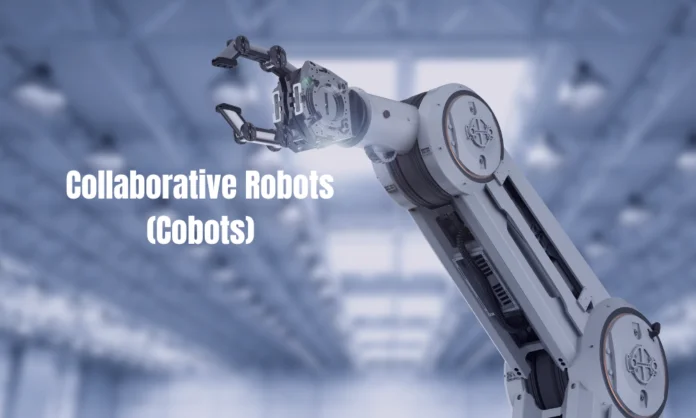Automated technologies are one of the most innovative fields in recent years. But there are technological solutions which are unknown or partially known to the public, especially to the ones who don’t work in factories. One such automated technology is a cobot.
According to reports, robotics market will generate a turnover of $375.82 billion with a CAGR of 17.33% by 2035, which was $64.8 billion in 2024.
One thing stands clear – the world is going to be automated. So, our recommendation is to prepare for the cutthroat competition that is to come in the near future.
As a response to the same, we’ve tailored a blog about what is a cobot, its working, and its present and future footprints.
What is a Cobot?
A robot who is a buddy to a human is a collaborative robot (cobot). It works apace with humans. They are engineered to work in factories due to their characteristics, which are designed to be light in weight and flexible.
There are all sorts of dangerous tasks for humans that exist in a factory which need to be executed for its importance. Cobots are used to execute these tasks as they can carry out almost all of the tasks like assembling the parts, cutting work for the required dimensions, or works in highest of temperatures. Cobots were developed for the purpose of working and interacting with humans, making them a very useful tool for humans, but they can’t do it without their programming.
Working Profile of Cobots
A fusion of advanced, sophisticated sensors and IoT software programming which allows interaction with humans and the ability to adapt to the conditions around them.
Cobots have been around for quite some time, introduced to the world in 1996 by Michael Peshkin and Ed Colgate. As it is said, necessity is the mother of all inventions; a device for the direct substantial interaction between a human and a robot was created.
In 2004, KUKA Robotics presented the first commercial Cobot. It has gone through work and development over time to become the version it is today, which has the ability to work as a collab with humans. Clearly, it took some time for cobots to be commercialized.
Where do Cobots Work?
They work in a number of places effectively.
Assembly: Factories can automate recurring assembly tasks which supports efficient work results.
QA (Quality Analysis): They have a system with artificial vision which helps the cobots to complete quality checks of products, finding defects and providing grounds for consistent quality production.
Logistics and Management of Materials: Warehouses need inventory. They can complete repetitive tasks like management of the inventory. Logistics involving packing, classification, packing and organization of products are completed effectively while avoiding injuries to humans.
Monochrome and Inconvenient Work: Tasks of monotonous and inconvenient nature to the humans like lifting of heavyweight objects and recurring movements can be delegated to cobots. They can also carry out ‘low value’ tasks like labelling of the objects.
Benefits of Employing a Cobot
Cutback in Costs: Operational costs are reduced as they can carry out tasks without disruptions. They can work 24/7 continuously, which increases productivity.
Depletion of Risks: Due to the presence of cobots in surroundings, the risk of loss of human lives is reduced. This is especially helpful in a setting with dangerous operations.
Adaptability to Production: As they are robots, they can be programmed and re-programmed to adapt quickly to the various tasks and processes. This shoots up production and helps businesses to adjust the operations according to the demands in the market.
Ease of working: Cobots are an easier and more accessible option to employ than traditional automation systems. For organizations of all sizes, it becomes easier to employ automation as a part of operations.
What the Future Holds?
Collaborative robots, or cobots, are changing the industrial setting for good by increasing productivity and safety through their ability to work with humans. Their introduction into various sectors shows a transformative shift towards more efficient and adaptable manufacturing processes. As industries continue to grab this piece of technology, the latent for increased productivity and improved human-robot collaboration will undoubtedly shape the future of work in the years to come.
For knowledgeable content on technology and robotics, check out YourTechDiet.
Recommended For You:
Sensors in Robotics: How Sensor Allow Robots to Communicate with the Environment?

